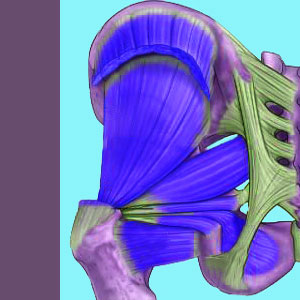
Piriformis pain in children can occur due to any of the reasons that might affect adults, as well. Children can injure their piriformis muscles, suffer functional pain due to imbalances and even suffer sciatica due to the muscle compressing the sciatic nerve. This last possible cause of symptoms may or may not be linked to a structural abnormality related to atypical positioning of the nerve in relation to the muscle.
Children are not nearly as susceptible to chronic pain as their adult counterparts. They are however, susceptible to mindbody pain syndromes in much the same manner as grown-ups, although these conditions tend to be much more transitory in young people.
This essay examines the occurrence of piriformis symptoms in children. We will explore the causes and consequences of such painful complaints, as well as providing special tips on managing young patients within the healthcare system.
Causes of Piriformis Pain in Children
Injury to the piriformis muscle can occur due to any traumatic event. Children are very active and might injure this muscle during any type of physical exertion. Fortunately, injury to the muscle should resolve organically in most children, without leaving them with any lingering consequences.
Some children are born with an abnormal arrangement between the sciatic nerve and the piriformis muscle. The nerve might run around or even through the muscle abnormally, making the nerve potentially subject to compression from the piriformis. When the sciatic nerve is compressed chronically or recurrently by the muscle, the diagnosis is called piriformis syndrome. This condition usually requires expert diagnosis and focused treatment to resolve.
Mindbody variants of piriformis pain or piriformis syndrome can occur due to repressed psychoemotional sensitivities. Many doctors have long blamed growing pains in children on ischemia due to psychological triggers. In more severe manifestations, pain might become chronic and severe, but still may have a completely nonstructural psychoemotional origin. Children are very susceptible to these pain syndromes, but usually do not suffer from them to the same degree as adults in terms of severity or duration.
Piriformis Pain in Kids Diagnosis and Treatment
It is important to seek out expert diagnosis for any children’s health issue. It is always also best to seek out more than one opinion before acquiescing to any particular treatment path. Parents are highly encouraged to learn all they can about the proposed cause of pain and do lots of independent research. This proactivity is a weapon that can help protect children against the common occurrence of misdiagnosis and financial predation.
When treatment is necessary, children are best served using constructive forms of care whenever possible. Avoiding drug and injection therapies in favor of natural and holistic treatment is ideal, when these options are considered indicated for the child’s particular diagnosis.
Surgery is almost never required for cases of piriformis pain, but in some rare instances, a minimally invasive procedure might be able to permanently resolve sciatic nerve compression that may otherwise become a life-long burden,
Always consider the child’s emotional state when seeking diagnosis and treatment. Failure to reassure children can escalate pain and set the perfect stage for a lifetime of chronic pain due to psychological nocebo influence.
Resolving Piriformis Pain in Children
Children are so precious. They must be respected and well cared for to keep them growing up strong and healthy. Some parents end up making matters worse for their children by placing them in care with opportunistic providers who are more interested in a passive, profitable patient than the child’s actual well-being. While this attitude is unfortunate, it does exist and therefore, parents are warned to research their child’s diagnosis and caregivers thoroughly.
Remember that there is no confirmation of piriformis pain or piriformis syndrome. The diagnoses can only be made subjectively, which leads to many unnecessary treatments, including those in children.
If the diagnosis is sound and treatment is curative and indicated, then pain should resolve and the child should move past the condition into a bright future. If pain does not resolve, then it is possible that the treatment is at fault, but in most cases, it is the diagnosis which is faulty and causing any and all therapies to fail. Keep this important tip in mind as you move forward with your child towards finding a cure.
Piriformis Pain > Causes of Piriformis Pain > Piriformis Pain in Children





